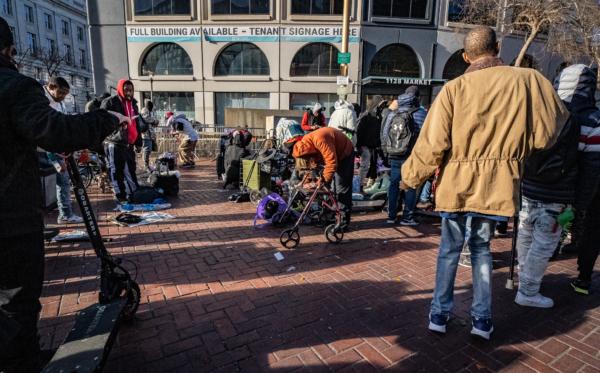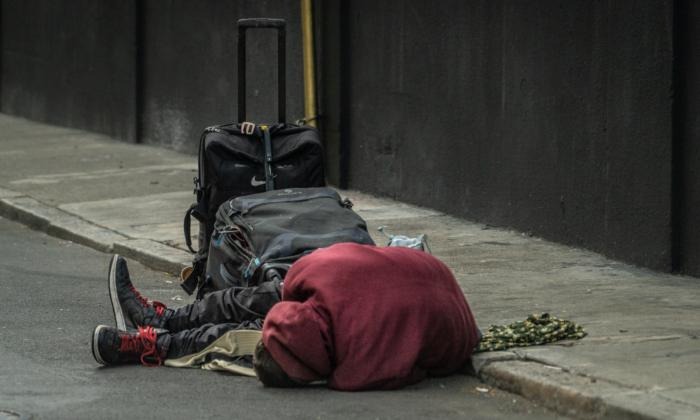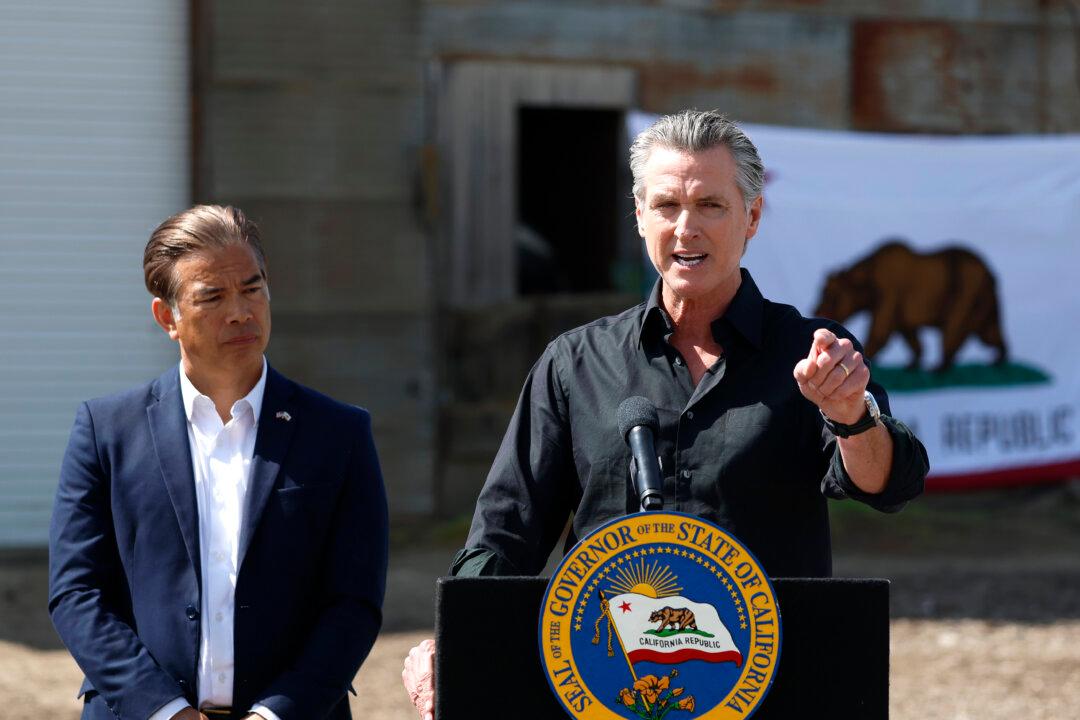Video footage from San Francisco posted on social media on Aug. 30 shows morgue vans loading bodies amid scenes of widespread addiction, with people folded up and contorted in unnatural positions in what many describe as dystopian settings on the streets of downtown.
Posts on X, formerly known as Twitter, repeatedly shared by locals indicate that as many as 18 overdose deaths took place in San Francisco throughout the day, but a spokesperson for the chief medical examiner’s office told The Epoch Times by email on Aug. 31 that 13 deaths occurred and are currently under investigation.
“Today, the Office of the Chief Medical Examiner initiated examinations on 13 cases received within the past twenty-four hours,” the spokesperson wrote. “The case and manner of death for these decedents remain under review.”
No toxicology results are yet available, and the examiner’s office had no further comment.
More than 81 percent of such cases revealed fentanyl during toxicology testing.
While deaths dipped slightly last year, numbers are now on the rise and on pace to set a record, as more than 500 have occurred in the city so far, with 71 accidental overdose deaths in July alone, according to the medical examiner’s data.
Overdose locations are spread throughout the city and concentrated in certain areas, based on medical examiner records.
Known for high crime and open-air drug markets, the city’s Tenderloin district accounts for approximately 18 percent of deaths, with the SOMA area, which is short for South of Market and located blocks from Union Square, and Polk/Russian Hill—known for curvy, picturesque Lombard Street—each accounting for 20 percent.

Fentanyl is responsible for the majority of deaths this year, according to testing results released by the medical examiner.
Odorless, tasteless, and highly toxic, the insidious nature by which fentanyl poisonings occur in unsuspecting victims is leading to rising numbers of overdose deaths, according to experts.
New synthetic analogs—drugs that are similar chemically but not identical to fentanyl—and other tranquilizers including xylazine and isotonitazine further complicate matters, as they’re resistant to opioid reversal medications such as naloxone, better known as Narcan. Xylazine is responsible for at least 16 deaths in San Francisco in 2023, according to the report, and isotonitazine is reportedly 20 times stronger than fentanyl, according to the Drug Enforcement Administration.
Victim advocates and family members of those lost to addiction wrote thousands of names in chalk on the sidewalk outside San Francisco City Hall that night, as the deaths occurred one day before San Francisco Supervisor Dean Preston held a gathering to bring attention to International Overdose Awareness Day on Aug. 31.
“Overdoses are at crisis levels,” Mr. Preston wrote on X the same day. “Today & every day, I’ll continue to work to ensure our city is using every evidence-based tool at our disposal—including overdose prevention, treatment on demand, recovery resources—to reduce overdoses [and] save lives.”
Supervisors have faced scrutiny on social media, as concerned residents express disappointment in the public safety issues plaguing the city, and many questioned Mr. Preston’s post with comments about perceived policy failures.

At the drug awareness gathering, one advocate for harm reduction—which focuses on education and overdose prevention as opposed to prosecution—was pictured at the event waving a sign declaring “Downtown is for drug users,” and another wore a “police are terrorists” shirt.
Responsible for nearly 6,000 deaths per year in California, as of the latest statistics from the state’s Department of Public Health covering 2021, fentanyl is drawing attention from lawmakers on both sides of the aisle.
Bipartisan bills seeking to increase penalties for fentanyl distribution were met with resistance in the Legislature, with members of public safety committees in both houses voicing preference for rehabilitation and overdose prevention.
Some lawmakers voiced reluctance to advance any proposals that include punitive measures, including incarceration, arguing that doing so would be extending the “failed War on Drugs.” Subsequently, eight of nine such bills were killed earlier this year.
California Gov. Gavin Newsom announced in May a joint operation between California Highway Patrol and the National Guard to disrupt fentanyl distribution in San Francisco.
Since then, hundreds of arrests have been made and enough fentanyl seized in two neighborhoods—56 kilograms—to kill nearly the state’s entire population, according to a Sept. 1 statement released by San Francisco Mayor London Breed’s office.







